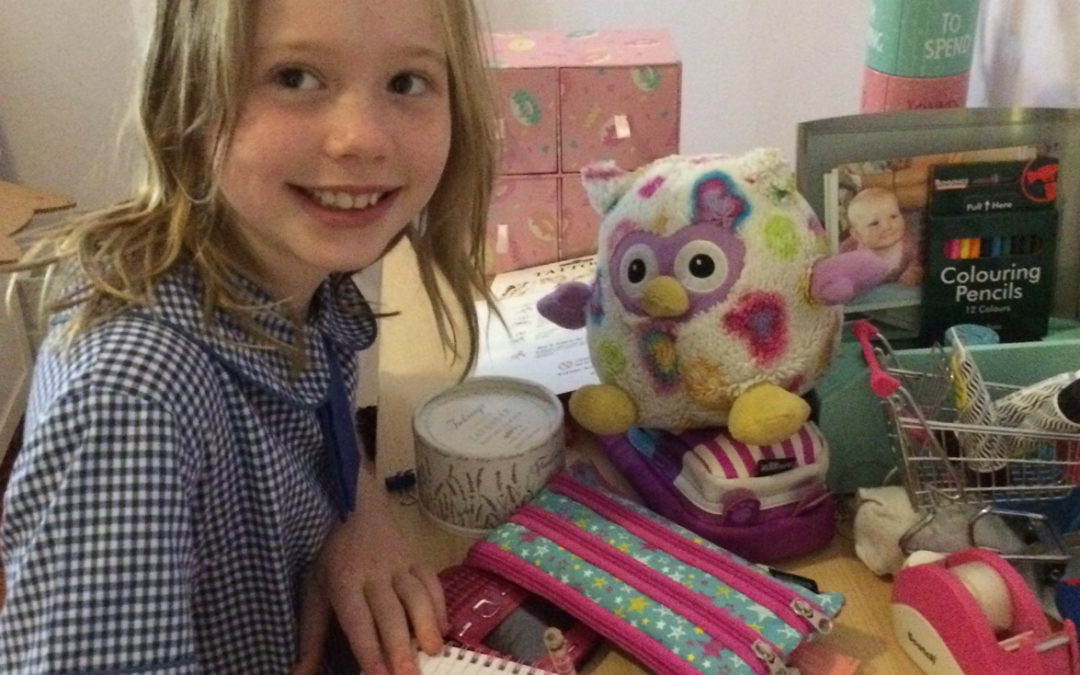
by DonnaGibbs | Aug 30, 2016 | Books and Children
Let me introduce three upper primary students who have plenty to say about what they like reading.

RUBY aged 10 in Year 4

MAX aged 11 in Year 6
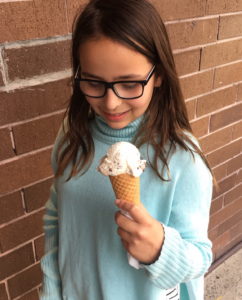
SASKIA aged 11 in Year 6
Did you have books read to you when you were little? Can you remember anything about that?
Max: Yes. I remember books about teddy bears, Winnie the Pooh, The Enchanted Woods, robot books.
Ruby: Ruby Flew Too. It was about a duck.
Saskia: Yes. We’re Going on a Bearhunt. And a lot of Dr Seuss.
Did you have any favourite picture books? Any you hated?
Max: My favourite picture book was called The Floods – about an abnormal family. For older kids they had chapter books. I also liked a big book about World War 1 and the Top 10 Battles that changed the world. I didn’t hate any.
Ruby: I didn’t like a book called Ruby about a car. I didn’t like it because it had pictures but I didn’t understand the words.
Saskia: I loved the Fancy Nancy series.
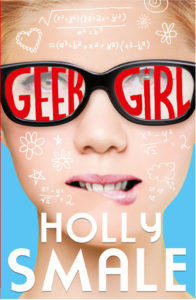 If your parents said you were going to live on a desert island or in space and you could only take one book, what would it be? Any reason for your choice?
If your parents said you were going to live on a desert island or in space and you could only take one book, what would it be? Any reason for your choice?
Max: If it was a desert island I would take a survival guide.
Ruby: A very very very thick book like Harry Potter!
Saskia: Either Geek Girl or Girl Online.
What kind of books do you like most now (eg factual information, animal stories, comics, narratives with female or male heroes, etc)?
Max: Narrative fiction. I find them engaging and they tell great stories with adventurous heroes that bend my imagination to make the world appear better.
Ruby: I like books with a twist, but a good twist that builds up so much tension.
Saskia: I love fiction or chapter books.
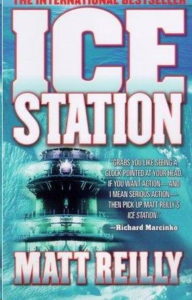 Can you suggest a book or an author for other children around your age to read?
Can you suggest a book or an author for other children around your age to read?
Max: Ice Station by Matthew Reilly. A gripping, fast paced military story.
Ruby: Emma Carroll The Girl Who Walked on Air. It’s really fun to read and once you start reading you don’t want to stop.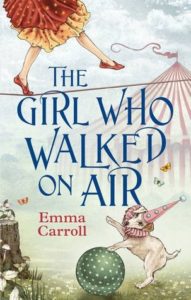
Saskia: The Hunger Games series by Suzanne Collins. It has so many twists and keeps you wanting more.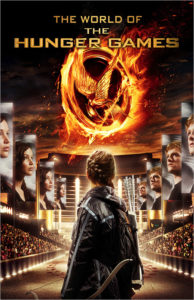
If you could write a book for children your age what would you make it about?
Max: A fantasy world based in an arctic universe where the heroes battle against the cold, frostbite, hypothermia, wolves and other problems beneath the snow, hidden in the blizzards.
Ruby: I would set it in reality. A book about a girl who runs away and she has to live through blizzards and things. She meets a wolf who follows her around and in the end they become friends and lie down together.
Saskia: My book would be set in reality and about a girl who is 12-13 but her life is very dramatic. Like everything goes wrong in her life!
Thanks Ruby, Max and Saskia for being guests on my blog. I’m working on a new book right now. it’s going to be part fantasy, part realism – set in an arctic universe with wolves, blizzards etc, and told from the point of view of a 12 to 13 year old for whom everything goes wrong. I’m guessing it’ll be a best seller!
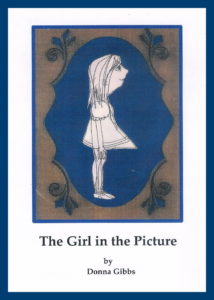
by DonnaGibbs | Aug 17, 2016 | Books and Children
An article in Daily Life, ‘How I’ve helped teach boys that girls are boring and unimportant’, by Kasey Edwards really made me think.
She quotes L.J. Lacey of the Melbourne children’s bookstore, Three Four Knock On The Door, saying that 90 per cent of the books she sells have a male protagonist, and customers almost never buy books for boys with a female main character. In contrast, she says, people buy books for girls with male protagonists all the time.
Edwards argues that when boys only read stories about boys or men, they’re given the implicit message that stories focusing on people who are different and whose experiences are different from their own are not worth bothering about.
She confesses that in the past when looking for a book for a boy she is as guilty as other adults of only buying books with male protagonists. It has never even occurred to her to buy a boy a book about a girl. She plans to change her habits because she believes it matters a lot in many important ways. You can read her article here.
I too must confess I tend to choose books for boys with male heroes. Two of my books have girls as main characters – The Girl in the Picture and The Girl in the App. I have never thought of giving these books to a boy to read or imagined them being bought for a boy.
 Recently I sent a few of my books including these to a friend for her children, a girl aged 10 and a boy aged 11. I imagined she’d give these two books to her daughter, but a message came back that she was reading them with her son. Some good parenting going on there!
Recently I sent a few of my books including these to a friend for her children, a girl aged 10 and a boy aged 11. I imagined she’d give these two books to her daughter, but a message came back that she was reading them with her son. Some good parenting going on there!
What are your book buying habits in relation to girls and boys? Any thoughts?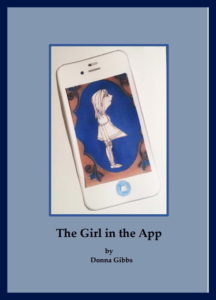
Footnote: I didn’t get any comments back about how you interpreted the cover of The Lost Thing so I’ve added a few things that I noticed.
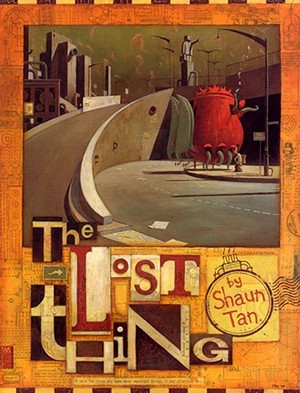 The printed title. Letters of uneven sizes and in a mixture of upper and lower case with the almost childish printing of the author’s name give the title a friendly, unconventional feeling. The word Lost stands out a bit because of its rich deep reddish colour. This suggests lostness is likely to be the focus of the story.
The printed title. Letters of uneven sizes and in a mixture of upper and lower case with the almost childish printing of the author’s name give the title a friendly, unconventional feeling. The word Lost stands out a bit because of its rich deep reddish colour. This suggests lostness is likely to be the focus of the story.
The main framed picture. This is a picture of a fairly ordered, yet empty type of city made of a lot of unappealing concrete. Is there an echo of the Jeffrey Smart picture of The Cahill Expressway in this?
There are hints in some of the buildings on the left that the city operates like clockwork. The statue could imply the city sees itself as rather important. There could be an echo of the Statue of Liberty in the outstretched arm? Is that undercut by the figure of the statue holding what looks like a briefcase and having a box like head?
The large red out of place object that has tentacles for legs is intriguing. It seems to be moving and alive or at least in working order. Are those surfboard like things wings for it to fly? Its incongruity with the rest of the scene makes you wonder about the part this thing will play in the story.
The only human figure is bent and odd looking – a bit like a distorted version of an office worker from one of John Brack’s famous cityscapes. Yet he hasn’t been quite swallowed up by conformity as Brack’s office workers have. This figure is still curious. He is drawn to look at and think about the strange misplaced thing he sees in front of him. A sign of hope perhaps?
The framing of the image and title. Marks around the main image are very ordered though faint. There are numbers, mechanical diagrams, rectangular blocks of colour, words and sentences of different lengths and in various fonts, all given varying degrees of importance. A message given some prominence (‘A tale for those who have more important things to pay attention to’) tells of an author whose humour is gentle and who is at home with irony. A large mark next to Shaun Tan’s name looks like a postmark. It makes me feel the book is on its way to me, a message from the author. I want to open the book to see how the story unfolds.




 If your parents said you were going to live on a desert island or in space and you could only take one book, what would it be? Any reason for your choice?
If your parents said you were going to live on a desert island or in space and you could only take one book, what would it be? Any reason for your choice? Can you suggest a book or an author for other children around your age to read?
Can you suggest a book or an author for other children around your age to read?




 The printed title. Letters of uneven sizes and in a mixture of upper and lower case with the almost childish printing of the author’s name give the title a friendly, unconventional feeling. The word Lost stands out a bit because of its rich deep reddish colour. This suggests lostness is likely to be the focus of the story.
The printed title. Letters of uneven sizes and in a mixture of upper and lower case with the almost childish printing of the author’s name give the title a friendly, unconventional feeling. The word Lost stands out a bit because of its rich deep reddish colour. This suggests lostness is likely to be the focus of the story.
Recent Comments